Aspidistra care and growing guide: simple tips for these sculptural plants
Aspidistra plants thrive in low light, like a lack of watering and rarely need feeding, so they're a great choice for any houseplant beginners
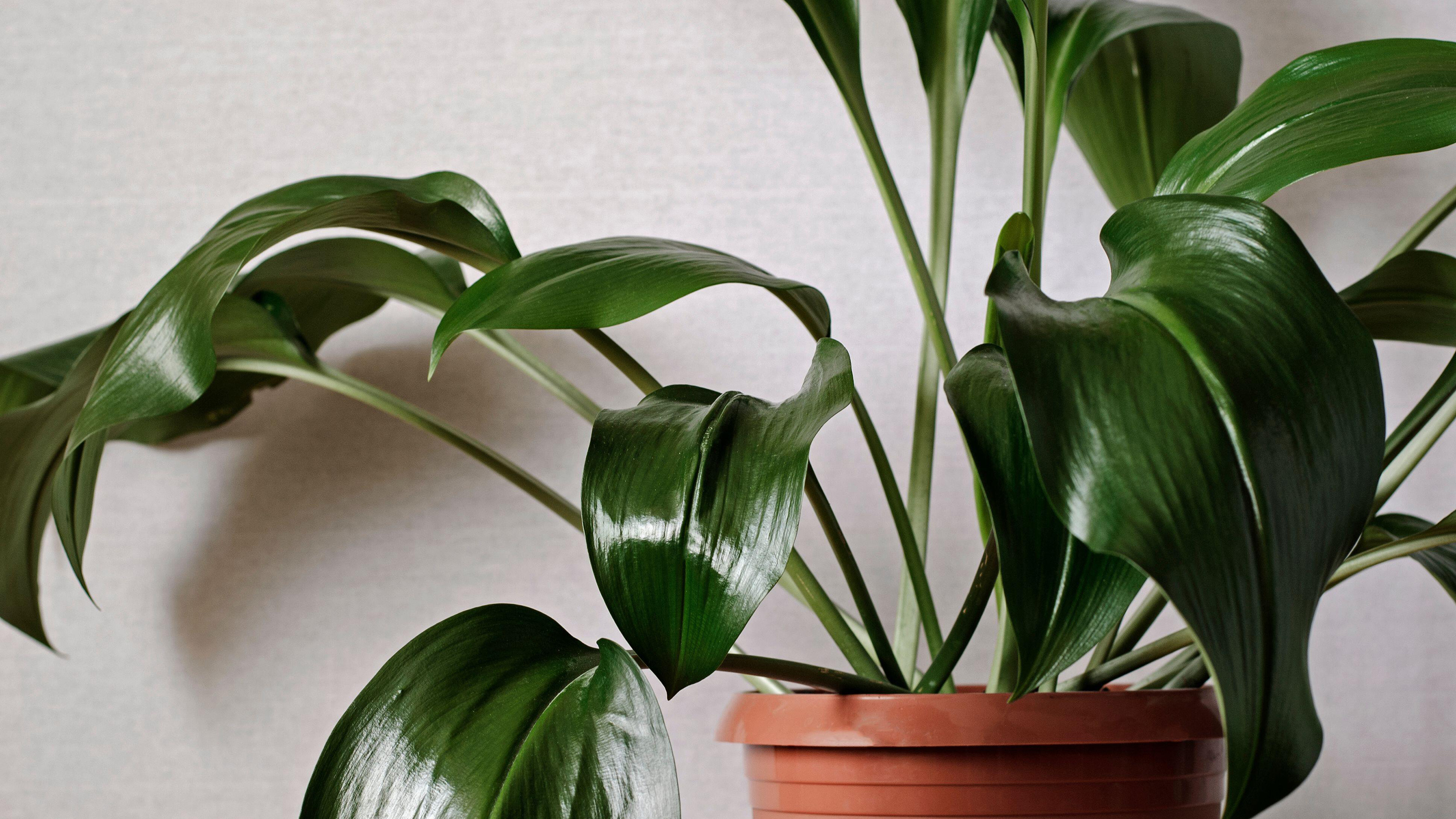

Elegant yet tough, the humble aspidistra (cast iron plant) has been a much-loved houseplant since the 19th century, when its ability to withstand the gloom and smoke in public houses and bars gave rise to its other name, the bar-room plant.
Originally from the woodlands of China and Japan, it produces sprays of dark green lance-shaped foliage and small bell-shaped cream and maroon flowers close to the soil, although it rarely blooms when grown indoors.
These sculptural plants make a leafy backdrop for flamboyant flowers or patterned foliage in a group display or you can use one on its own in a simple terracotta pot to lend a note of stylish sophistication to a room. Aspidistras will also grow well in cool, north-facing spaces where few other houseplants will survive.
There is a small range of cultivars to choose from, too, including Aspidistra elatior ‘Variegata’ which has irregular cream and green striped leaves; the lime-striped cast iron plant ‘Asahi’; and ‘Milky Way’, which sports white spotted foliage.
As well is being one of the best indoor plants, aspidistras are also non-toxic for humans and pets.
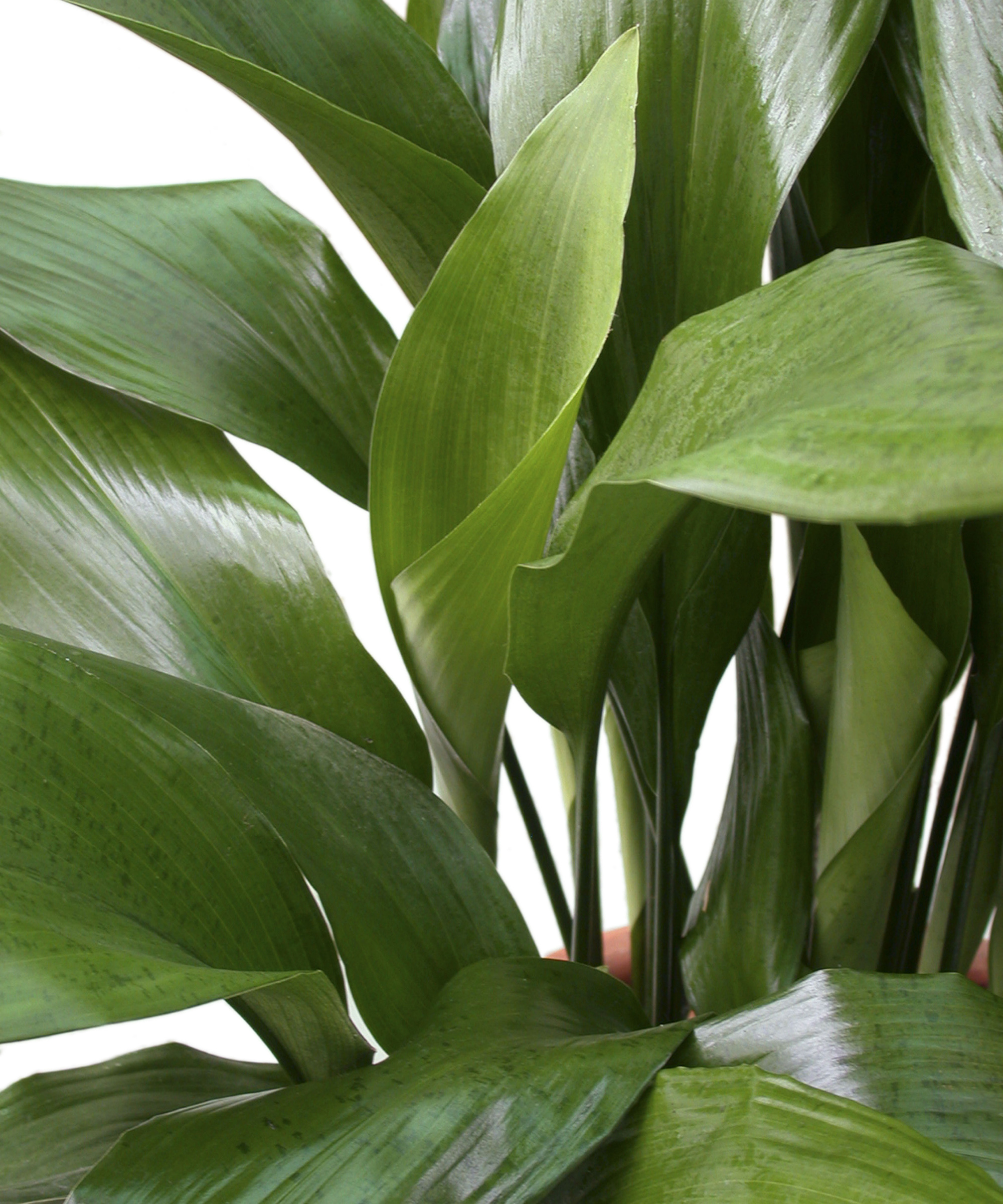
Place your aspidistra in a partly shaded spot, out of direct sun
Essential aspidistra care tips
Emily Lawlor, owner of Happy Houseplants, says aspidistras’ beautiful shape and the fact they are low maintenance indoor plants, make them a great choice for beginners and experts alike.
She adds: 'Tolerating periods of neglect, dust, droughts, and cold temperatures as low as 18˚F (-2˚C), even those with a brown thumb can keep a cast iron plant alive for many years.'
1. Position your aspidistra in partial shade
While other houseplants may need lots of light to thrive, the aspidistra is a low light indoor plant, enjoying a spot in partial shade, out of direct sun. Emily Lawlor explains that this would be a room or area that receives no more than three to six hours of direct sun each day.
'We recommend placing your aspidistra plant about 3ft (90cm) away from an east-facing window to give it the light it needs.' In brighter rooms, simply display it further from the window.
'Variegated forms of the cast iron plant such as ‘Asahi’ will need a little more light to maintain their colors,' she adds. And all types prefer average room temperatures of between 65-75˚F (16-24˚C), though they will tolerate hotter and colder conditions for short periods.'
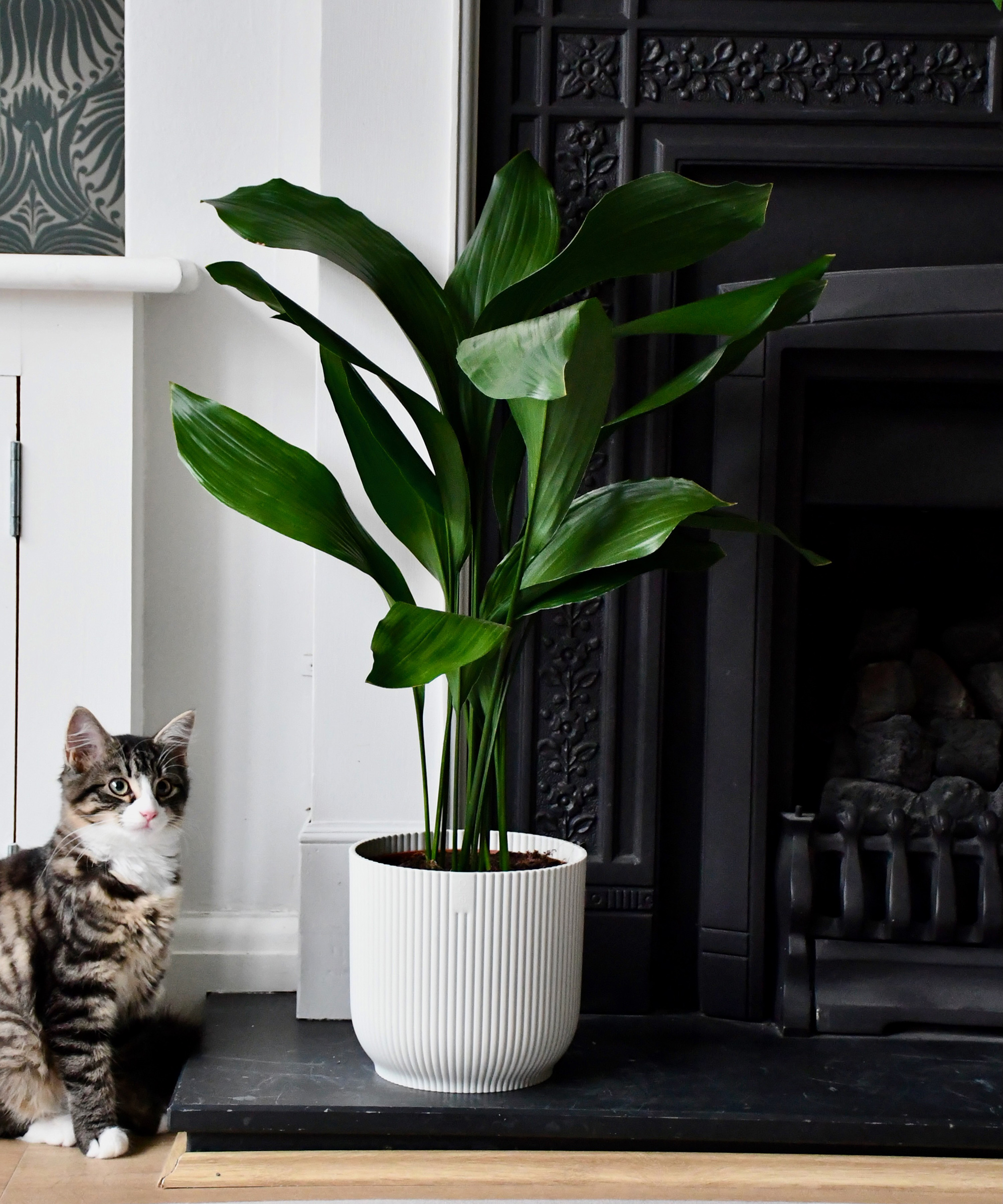
The undemanding cast iron plant makes a beautiful feature in a plain pot in a living room
2. Guard against overwatering
Aspidistra plants are drought tolerant and only need watering from spring to fall when the top of the compost feels dry. Like snake plants, they prefer to be kept on the dry side. Reduce watering further in winter so that the compost is almost dry.
Just as you would when growing succulents, guard against overwatering, which may lead to root rot. Do this by planting your aspidistra in a pot with drainage holes in the base, then display the plant inside a waterproof container. You can then lift out the plant, water it over a sink, and leave it to drain fully before returning it to its waterproof container.
Unlike the orchid, cast iron plants do not demand high humidity levels, but if you're not keeping them as a bathroom plant, misting the leaves once a week will keep them in peak condition.
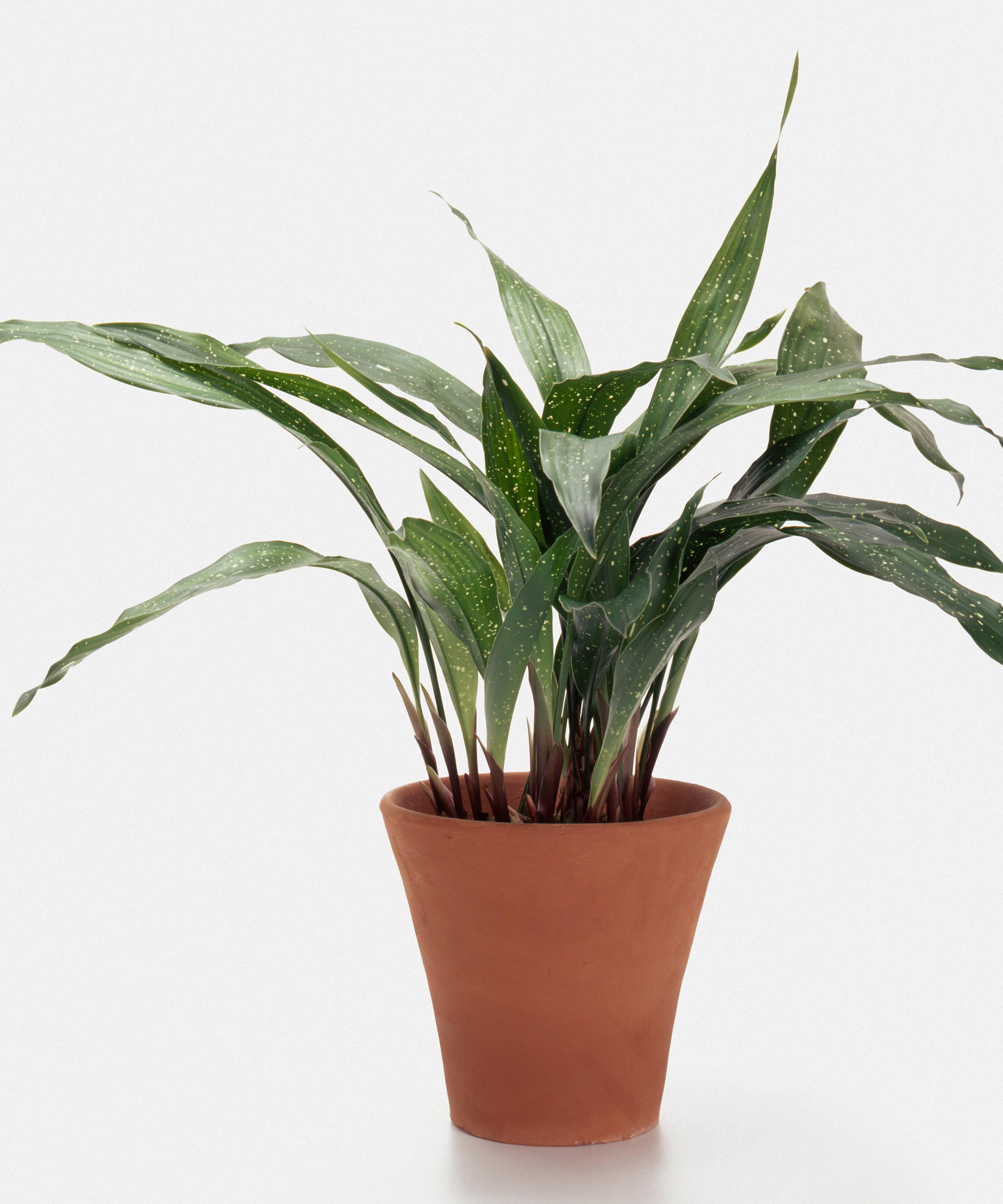
‘Milky Way’ is a pretty cultivar with white-spotted leaves
3. Look out for brown leaves
Yellow or brown leaves may be a sign of overwatering. Emily says: 'Don’t worry if a single leaf at the base of the plant turns yellow, which is normal, but if a large number take it in turn to yellow up and die off, the soil may be too saturated with water, resulting in root rot.'
To remedy this problem, leave your plant to dry off for a couple of weeks, which you can do for overwatered kentia palms too. Also transfer it to a pot with drainage holes in the base, if it’s not in one already, and water as described above.
Emily adds: 'Yellowing leaves can be the result of root disturbance, too, so do not repot a mature plant more than once every three years.'
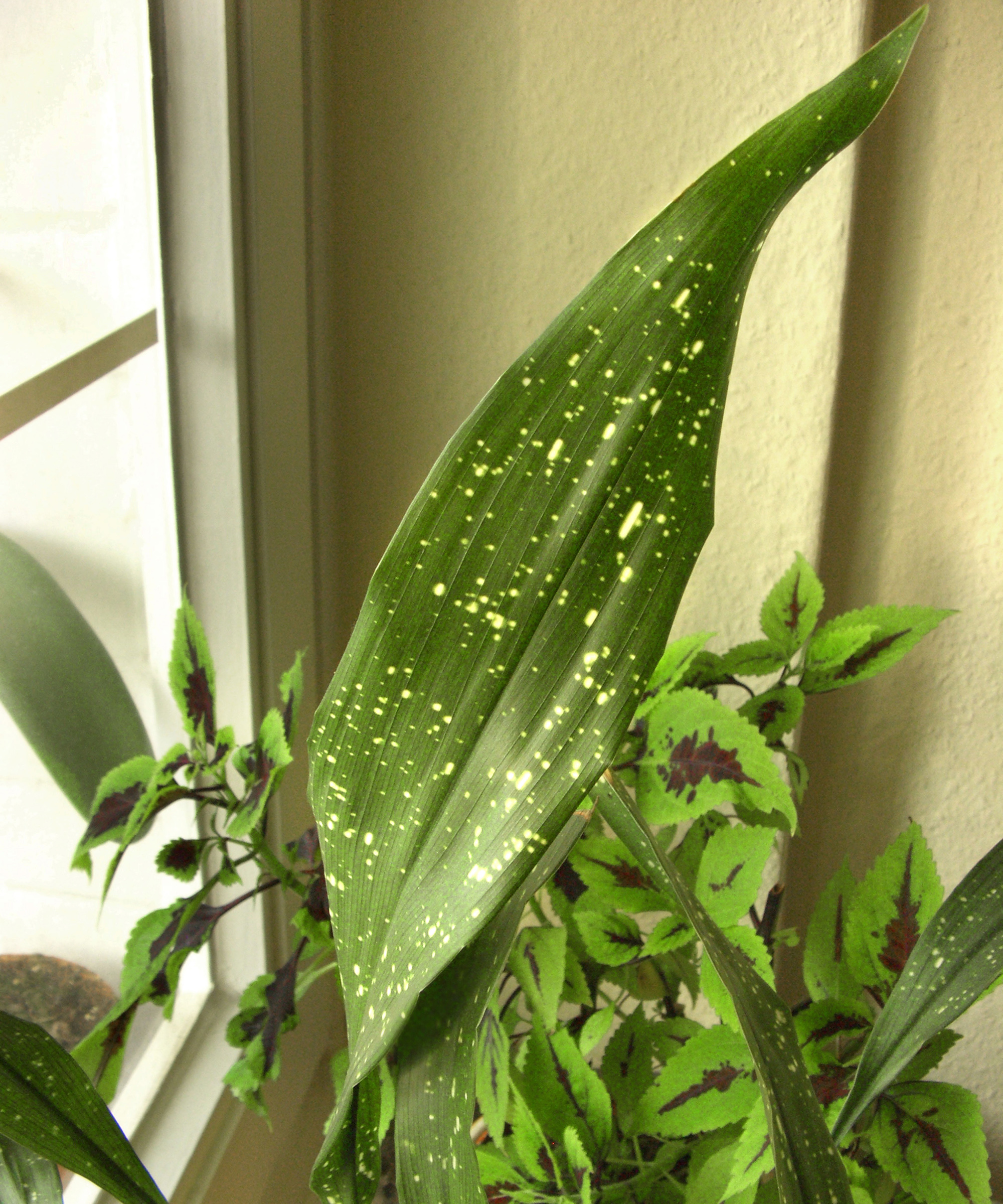
Be careful not to overwater your aspidistra
Feeding aspidistra plants
Where other indoor plants need more regular feeding, like the rubber plant which needs a top up of nutrients once or twice a month, the aspidistra is far less needy.
Emily suggests feeding your plant once every two months from spring to late summer: 'Vegan, organic plant food will keep it healthy during the growing season – you do not need to feed it in the fall and over winter while it’s dormant.'
Key problems with aspidistra
Apart from leaves turning brown, the cast iron plant lives up to its name, and is rarely troubled by pests and diseases. Very occasionally, it may be attacked by mealybugs, scale insects and red spider mite. Check your plants regularly for signs of these sap-sucking insects, which distort or discolor the stems and leaves.
A common ailment of philodendron and fiddle leaf fig, mealybugs are woodlice-like creatures that hide beneath a fluffy white coating; scales look like little hard bumps on the stems; and tiny spider mites cause white mottled patches on the foliage.
First try wiping off the insects and any scale insect eggs with a damp cloth – if they are just affecting just one leaf, it may be easier to remove it but do not defoliate the entire plant.
For more persistent infestations, treat the pests with insecticidal soap, or carefully dab mealybugs and scale insects with a cotton bud soaked in a little methylated spirit.
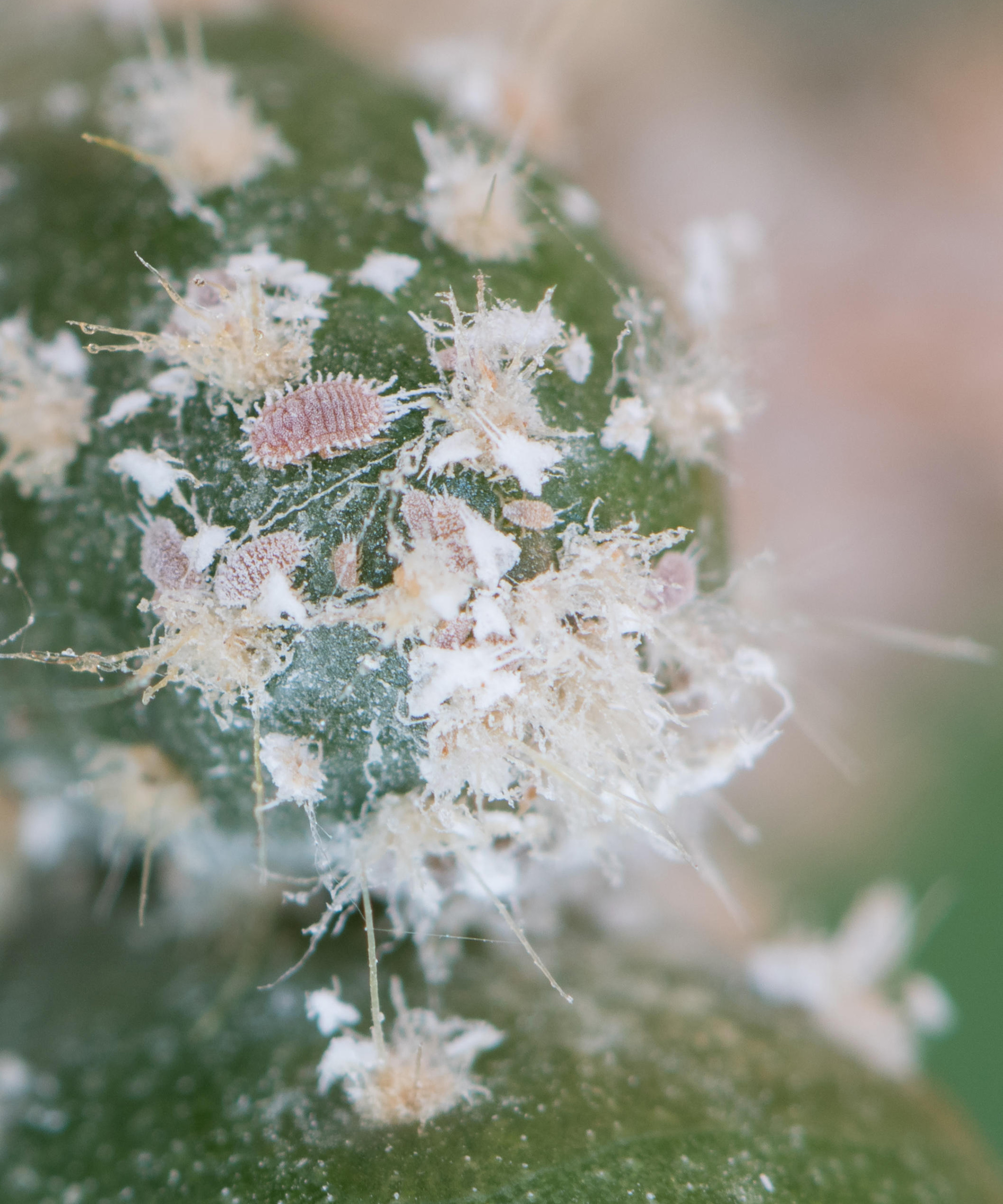
If you spot the tell-tale white coating covering mealybugs, try wiping these pests off your plant with a damp cloth
Can you grow aspidistra outside?
Aspidistras can survive a few degrees of frost, but Paul Thomas, owner of House of Plants, says plants dislike sudden changes in temperature, so they may suffer if you remove them from your indoor garden on the first warm day of spring, when night-time temperature may drop well below the level in your home.
'If you want to use an aspidistra to decorate your garden outside, acclimatize it first. After the last frosts in late spring, pop it outside during the day but bring it back indoors at night for a couple of weeks; it should then be okay to stand outside for the rest of the summer,' says Paul.
'Just remember to plant it in a pot with drainage holes in the base, place it out of direct sun, and bring it indoors again in early fall or as temperatures start to plummet.'
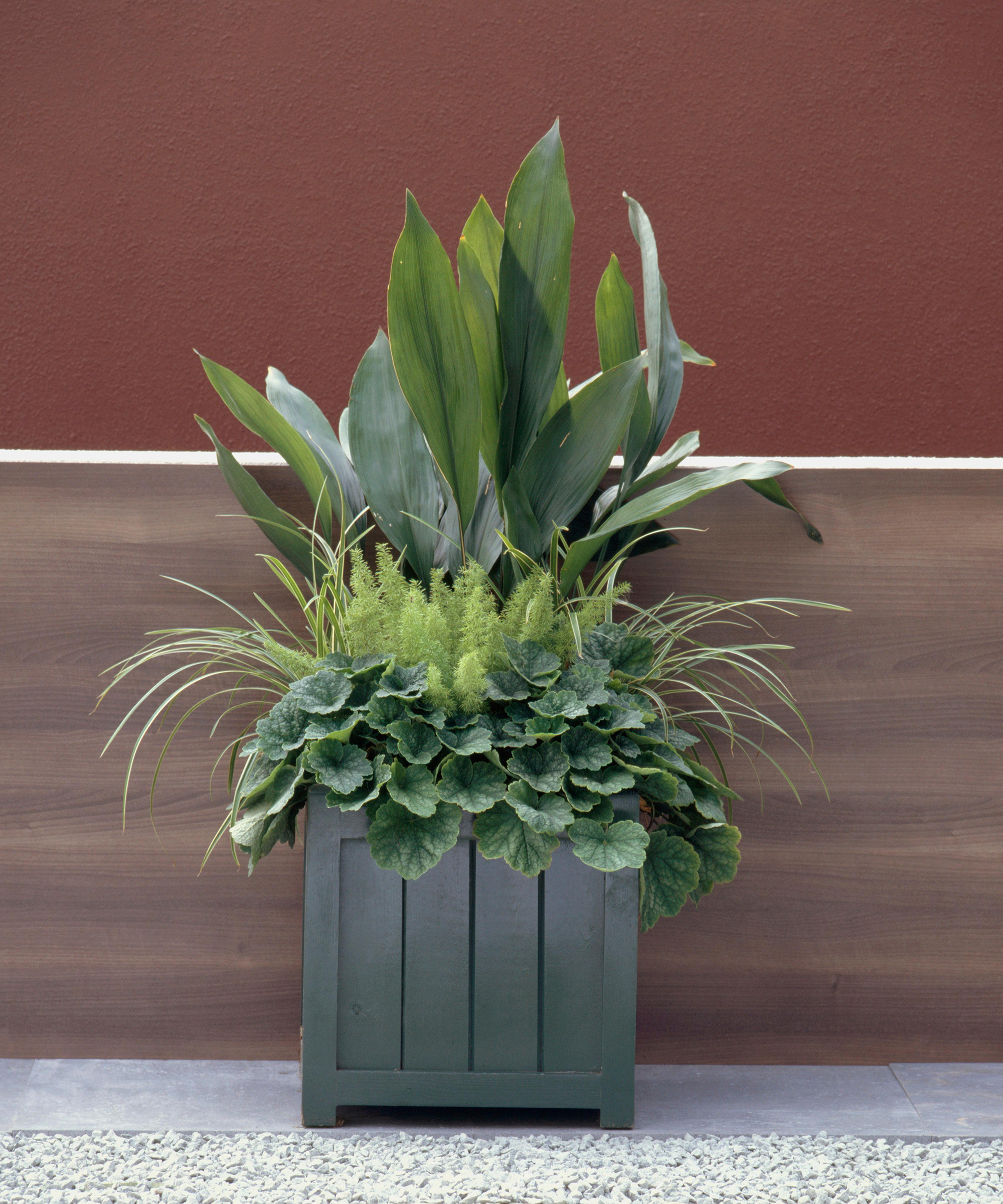
Once your cast iron plant is accustomed to temperatures outside in the garden in summer you can combine it in a large pot with other shade lovers such as asparagus ferns, heucheras and sedges
How do you propagate an aspidistra?
Like with calathea propagation, Paul divides his plants in late summer, after the new leaves have developed. He says: 'Choose a plant whose stems are filling the pot. Water and leave it to drain, then tip it out of its pot and look for the small white swollen roots called corms at the base of the stems.'
'Simply pull these apart gently with your hands to form small clumps, each with three or four leaves and stems with corms and roots attached at the base. Pot up the clumps in ericaceous (acidic) compost in containers just large enough to accommodate the corms and roots.'
'Also make sure you plant them at the same level in the compost as they were in their original container.' Paul then recommends keeping them almost dry over winter; new growth should start to emerge the following spring.
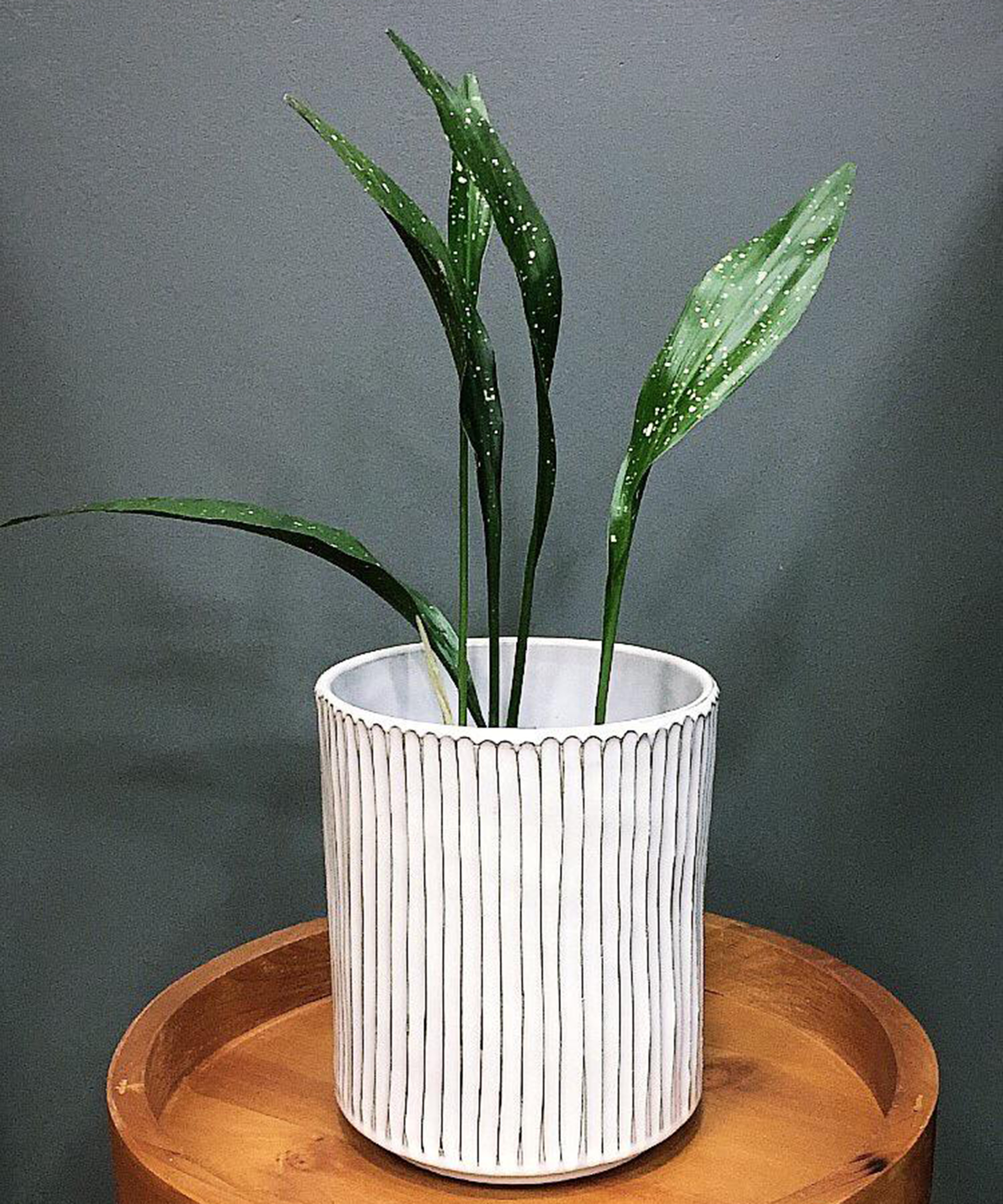
Propagate aspidistra by dividing into new smaller plants
Why do aspidistra leaves turn brown?
Paul Thomas says that leaves may turn yellow or brown if your plant is in strong, direct sunlight, or if it is given too much or too little water. 'Aspidistras are very drought-tolerant so brown or yellow leaves most often occur when plants are overwatered, particularly in winter, causing their compost to become saturated,' he says.
'To avoid this, always plant in a pot with drainage holes in the base, as you would a Chinese money plant, and ensure it never sits in a waterproof container with a pool of water at the bottom.'
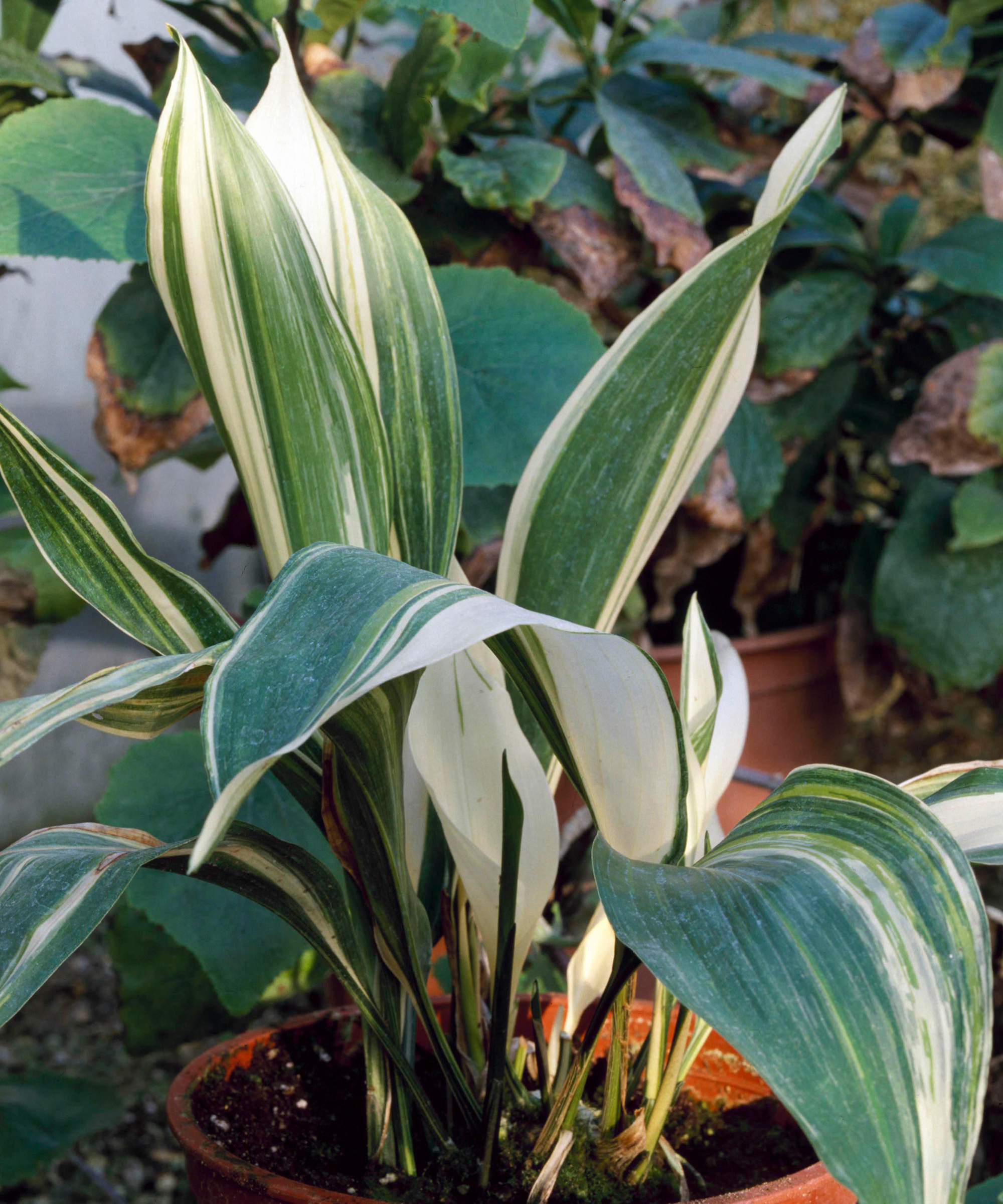
The cultivar ‘Variegata’ has irregular cream-striped leaves but needs a little more light to maintain its coloration
Where to buy aspidistra plants
Shop aspidistra plants in the US:
Shop aspidistra plants in the UK:

Zia Allaway is a garden book author, editor, and journalist, and writes for a range of gardening and women’s magazines, including Easy Gardens, Homes & Gardens and Livingetc, as well as The Guardian and The Daily Telegraph newspapers. She has also written books for the Royal Horticultural Society and Dorling Kindersley publishers, including Eco-Gardening, Compost, Low Maintenance, Practical House Plant Book, Practical Cactus & Succulent Book, Indoor Edible Garden, What Plant Where, and the Encyclopedia of Plants and Flowers.
